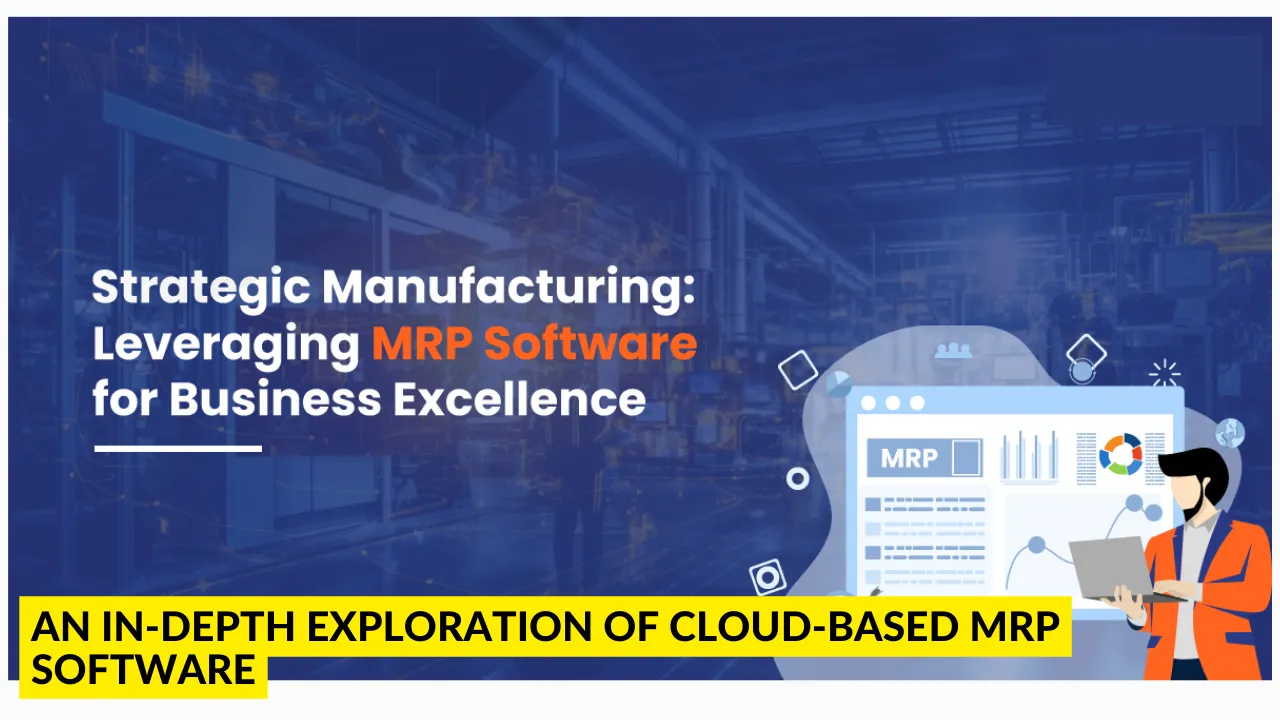Introduction:
In recent years, the manufacturing industry has undergone a significant transformation, driven by advancements in technology. One such groundbreaking innovation is the adoption of Cloud-Based Material Requirements Planning (MRP) Software. This comprehensive 2500-word article will delve into the intricacies of Cloud-Based MRP Software, exploring its benefits, features, implementation challenges, and the profound impact it has on streamlining manufacturing processes.
Section 1: Understanding MRP Software
- Definition and Evolution: A brief overview of Material Requirements Planning (MRP) software and its historical evolution.
- Traditional MRP Challenges: Discussing the limitations and challenges faced by traditional on-premise MRP systems.
Section 2: The Rise of Cloud-Based MRP Software
- Definition and Characteristics: Defining Cloud-Based MRP Software and highlighting its key characteristics.
- Advantages Over On-Premise Solutions: Exploring the distinct advantages offered by cloud-based solutions, including scalability, accessibility, and cost-effectiveness.
- Real-time Collaboration: Discussing how cloud-based MRP facilitates seamless collaboration among different departments and stakeholders.
Section 3: Features and Functionality
- Inventory Management: Detailing how cloud-based MRP systems optimize inventory control and reduce carrying costs.
- Demand Forecasting: Exploring the role of advanced forecasting tools in anticipating demand fluctuations and improving production planning.
- Production Scheduling: Discussing the capabilities of cloud-based MRP in optimizing production schedules for enhanced efficiency.
Section 4: Implementation Considerations
- Data Security: Addressing concerns related to data security and compliance in cloud-based MRP systems.
- Integration with Existing Systems: Examining the challenges and strategies for integrating cloud-based MRP software with existing ERP systems.
- Training and Adoption: Discussing the importance of training programs for employees to adapt to the new cloud-based technology.
Section 5: Case Studies and Success Stories
- Highlighting successful implementations of cloud-based MRP software in various industries.
- Examining the positive outcomes, including increased productivity, reduced costs, and improved customer satisfaction.
Section 6: Future Trends and Innovations
- Artificial Intelligence and Machine Learning: Exploring how AI and ML are being integrated into cloud-based MRP systems for predictive analytics and enhanced decision-making.
- IoT Integration: Discussing the role of the Internet of Things (IoT) in connecting manufacturing equipment and sensors to further optimize production processes.
FAQs – Cloud-Based MRP Software
1. What is Cloud-Based MRP Software?
Cloud-Based Material Requirements Planning (MRP) Software is a digital solution that leverages cloud infrastructure to manage and optimize manufacturing processes. It facilitates real-time collaboration, offers scalability, and provides accessibility advantages over traditional on-premise MRP systems.
2. How does Cloud-Based MRP differ from Traditional MRP Systems?
Cloud-Based MRP systems operate on remote servers accessible via the internet, while traditional systems are installed on-site. The cloud-based approach offers greater flexibility, scalability, and cost-effectiveness compared to the rigid structures of on-premise solutions.
3. What are the Key Features of Cloud-Based MRP Software?
Key features include inventory management, demand forecasting, and production scheduling. These features enhance efficiency, reduce carrying costs, and provide insights for informed decision-making in manufacturing processes.
4. What are the Advantages of Cloud-Based MRP Software?
Cloud-Based MRP offers advantages such as improved accessibility, real-time collaboration, and cost-effectiveness. It enables businesses to streamline operations, enhance productivity, and adapt more efficiently to changing market demands.
5. What Challenges are Associated with Implementing Cloud-Based MRP?
Common challenges include concerns about data security, integration with existing systems, and the need for employee training. Addressing these challenges is crucial for a successful implementation and adoption of cloud-based MRP solutions.
6. How is Data Security Managed in Cloud-Based MRP Systems?
Cloud-based MRP providers implement robust security measures, including encryption, authentication protocols, and regular audits to ensure data integrity and protection. It’s essential to choose a reliable provider with a strong track record in data security.
7. Can Cloud-Based MRP Software Integrate with Existing ERP Systems?
Yes, many cloud-based MRP solutions are designed to integrate seamlessly with existing Enterprise Resource Planning (ERP) systems. However, it requires careful planning and execution to ensure a smooth integration process.
8. Are Training Programs Necessary for Cloud-Based MRP Adoption?
Yes, training programs are essential to familiarize employees with the new cloud-based technology. This ensures a smooth transition, enhances user proficiency, and maximizes the benefits of the MRP system.
9. How Does Cloud-Based MRP Software Benefit Small Businesses?
Cloud-based MRP is particularly advantageous for small businesses due to its cost-effectiveness and scalability. It allows small enterprises to access advanced manufacturing management tools without the need for substantial upfront investments.
10. What Future Trends are Expected in Cloud-Based MRP Software?
Future trends include the integration of Artificial Intelligence (AI) and Machine Learning (ML) for predictive analytics, as well as increased incorporation of the Internet of Things (IoT) to optimize manufacturing processes further. These innovations aim to enhance decision-making and overall system efficiency.
Conclusion:
In conclusion, this article provides a comprehensive understanding of Cloud-Based MRP Software and its transformative impact on the manufacturing industry. By examining its features, advantages, implementation challenges, and future trends, readers will gain valuable insights into the role of cloud technology in revolutionizing manufacturing processes. As businesses continue to evolve, embracing cloud-based MRP software becomes not just a choice but a strategic imperative for sustainable growth and competitiveness in the modern industrial landscape.

